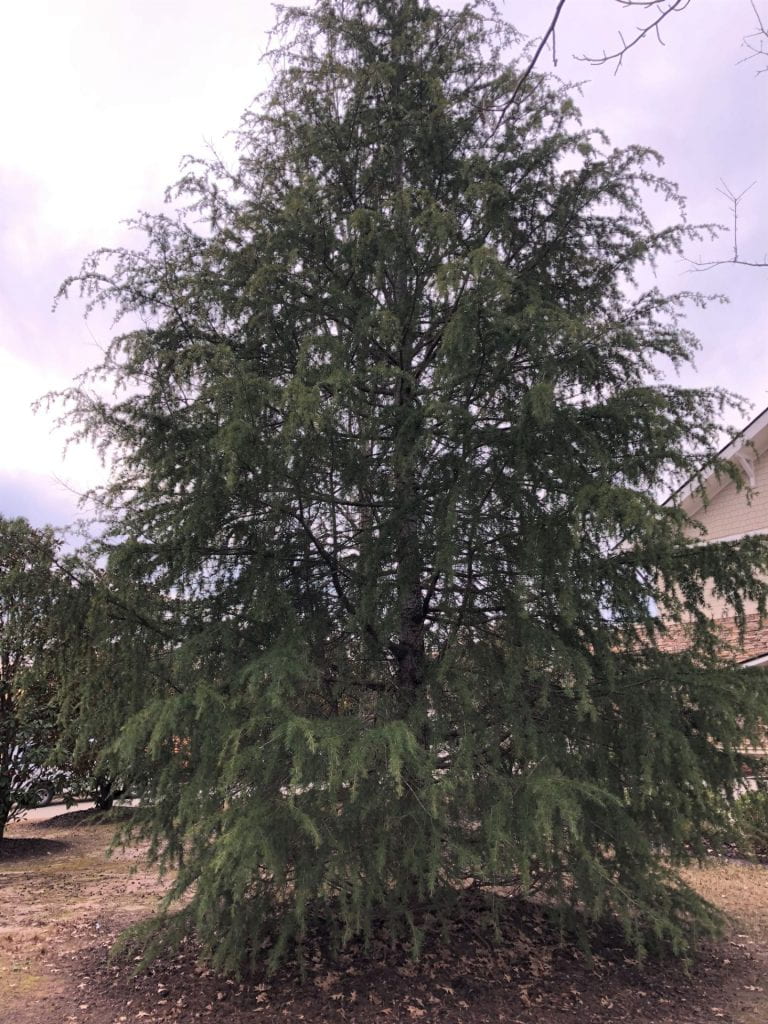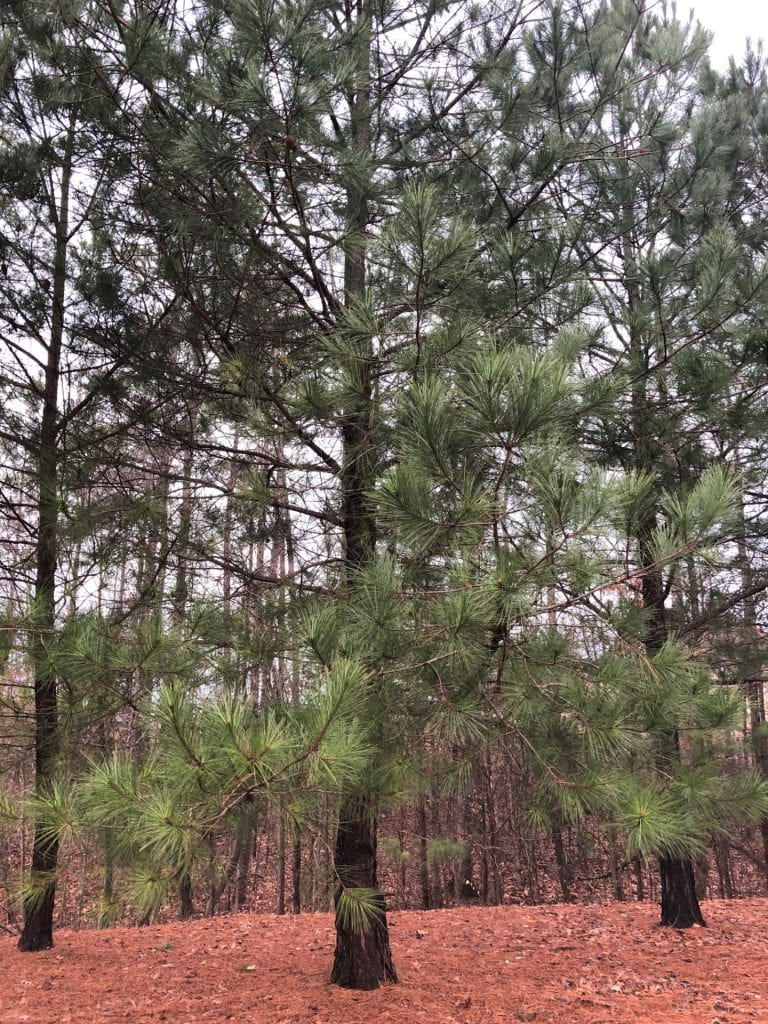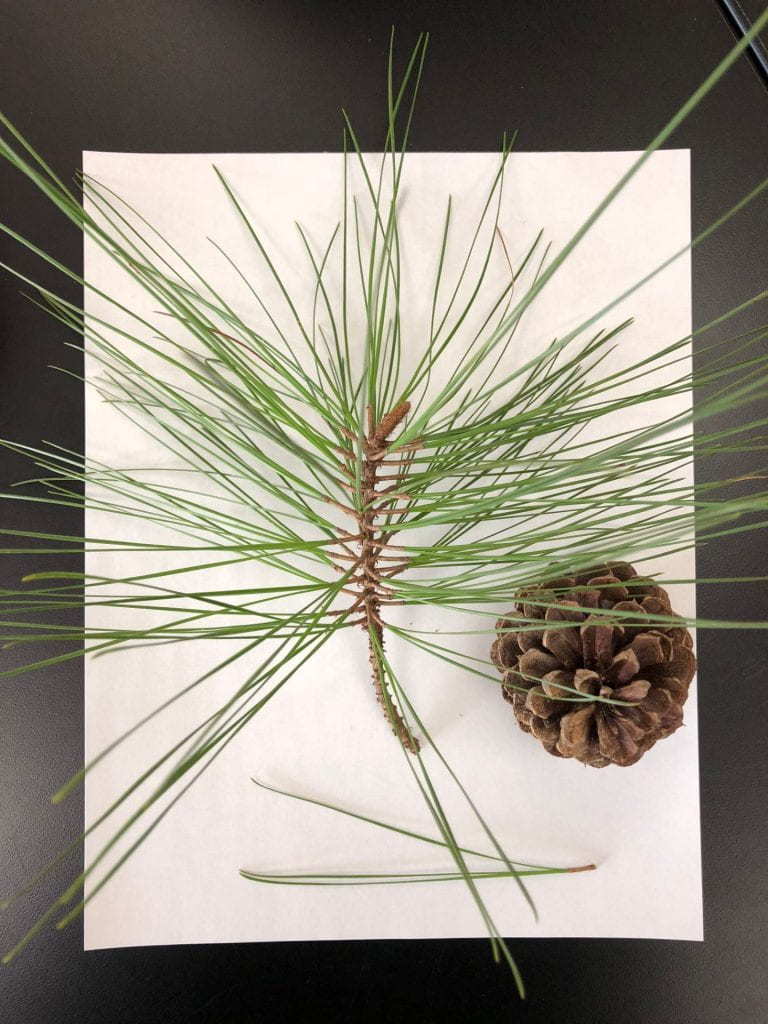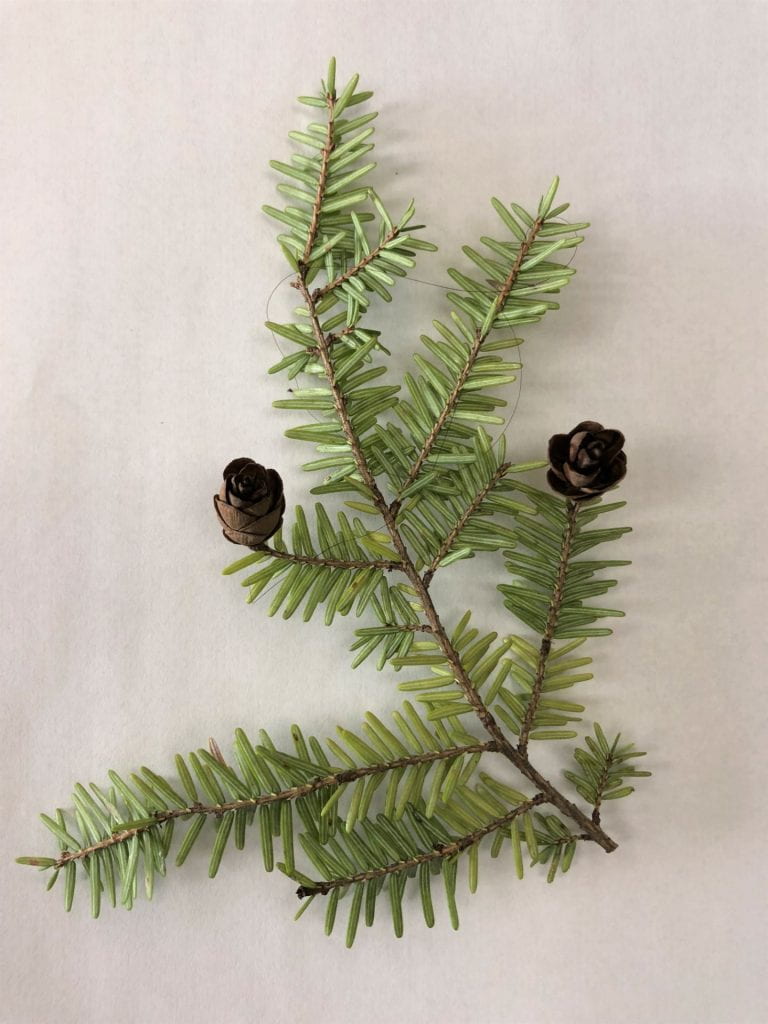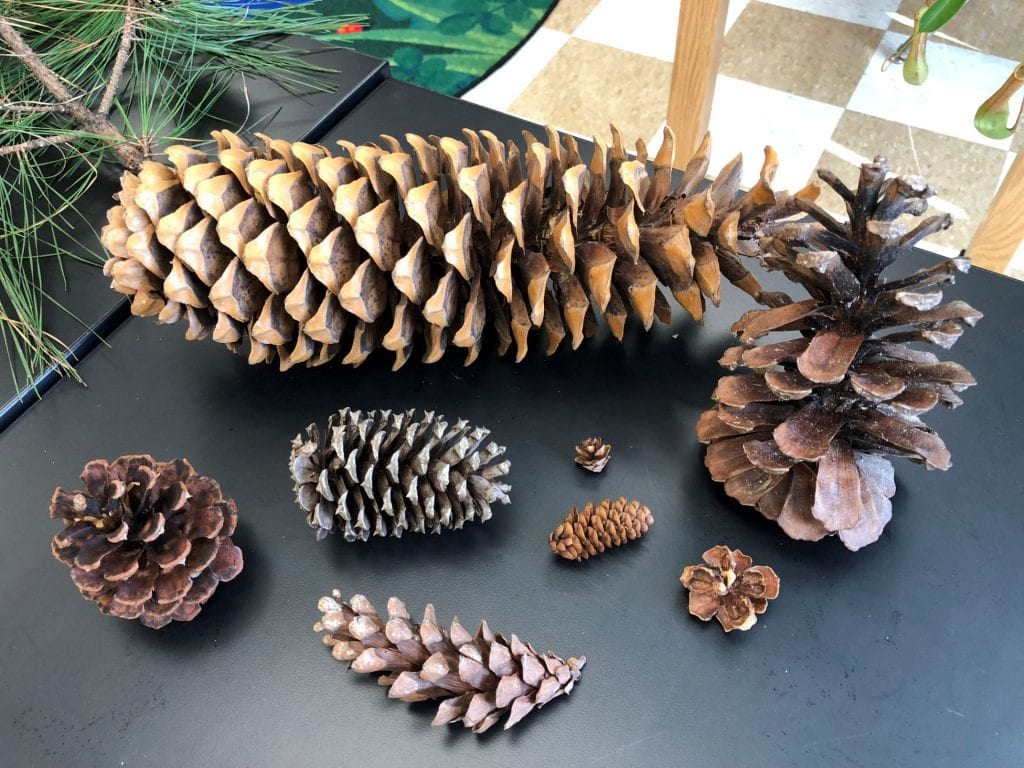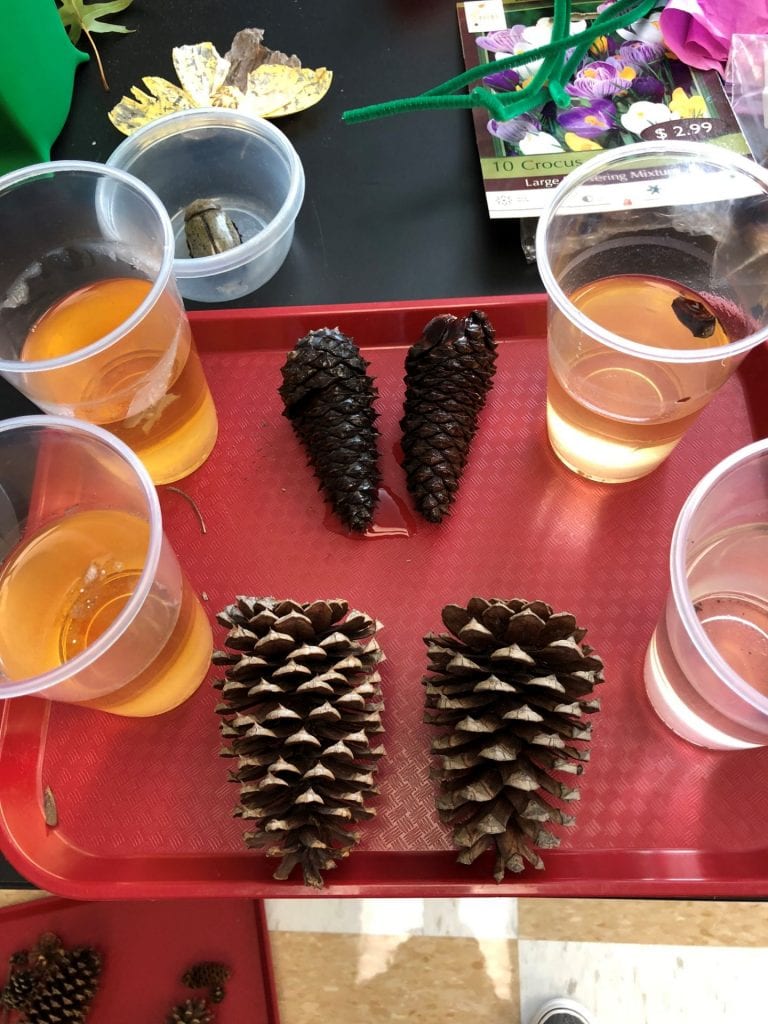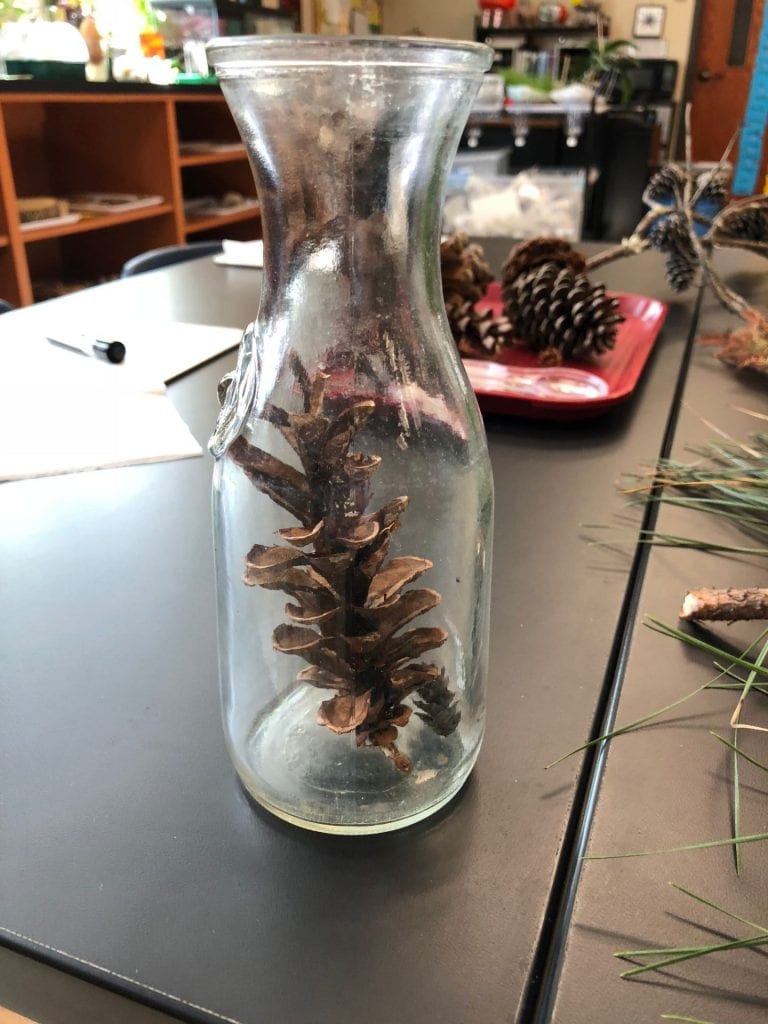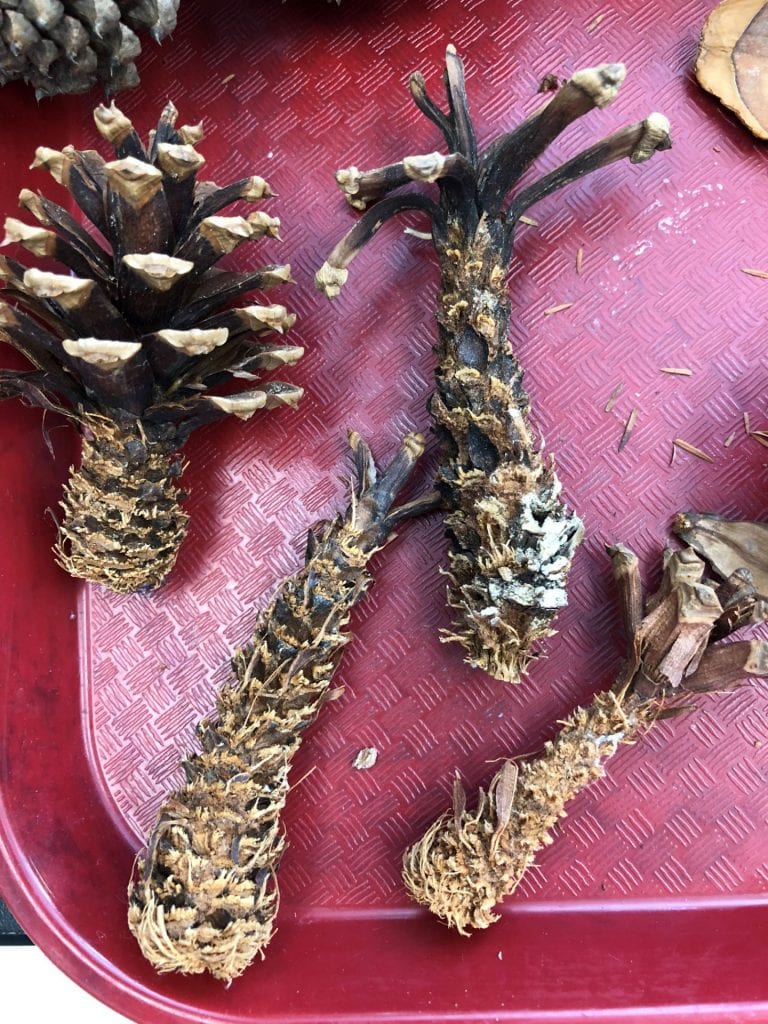Evergreens and Conifers
First grade arborists are completing their tree unit. I reviewed concepts that we learned previously with a lesson about evergreens and conifers. What are the differences between deciduous and evergreen trees? Are all needles the same? Why is the end of the cut branch sticky? Did you know that there are male and female cones? Male pine cones produce pollen and female cones contain the seeds.
We discovered that not all evergreens are conifers (cone bearing) and that all conifers are not evergreen. We know that God loves diversity because even the cones on one tree were not identical. Click here to watch a movie about evergreens with your child.
I brought in branches and cones from these evergreens that are growing around the Lower School. First grade scientists drew these branches on their dry erase boards, taking note of the length of the needles and how are attached to the branch.
Click here to watch a lesson on the golden ratio which can be seen on the bottom of a pine cone. We did not watch this together.
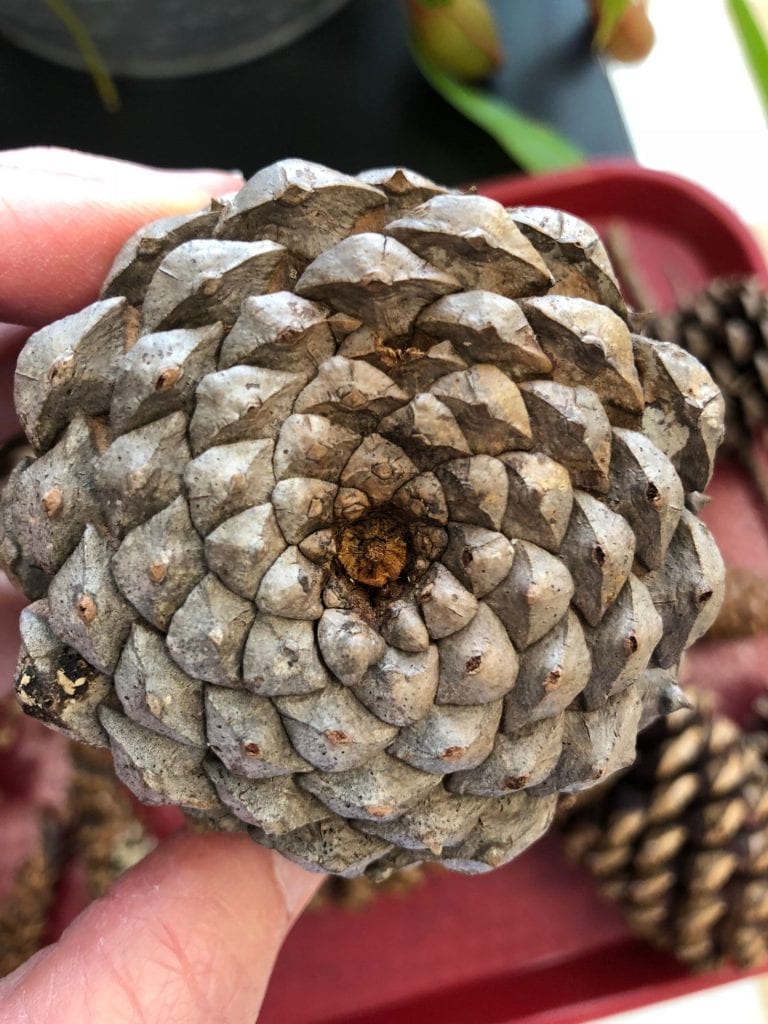
Why do pine cones close when they are wet? Think seed dispersal. How long will it take for them to reopen? Click here to watch a pine cone open and close.
Using what you know, how did I fit this pine cone inside the vase?
Conifers have cones. Yes they do!
Conifers have cones.Yes they do!
They close when they’re wet
And they open when they’re dry.
Conifers have cones. Yes they do!
What happened to these pine cones? is there something inside them that an animal might want to eat?
Take a walk with your child and look for examples of conifers and evergreens. Do you see any cones on the trees? Are the cones you see open or closed? Compare needles and look for animal homes.
